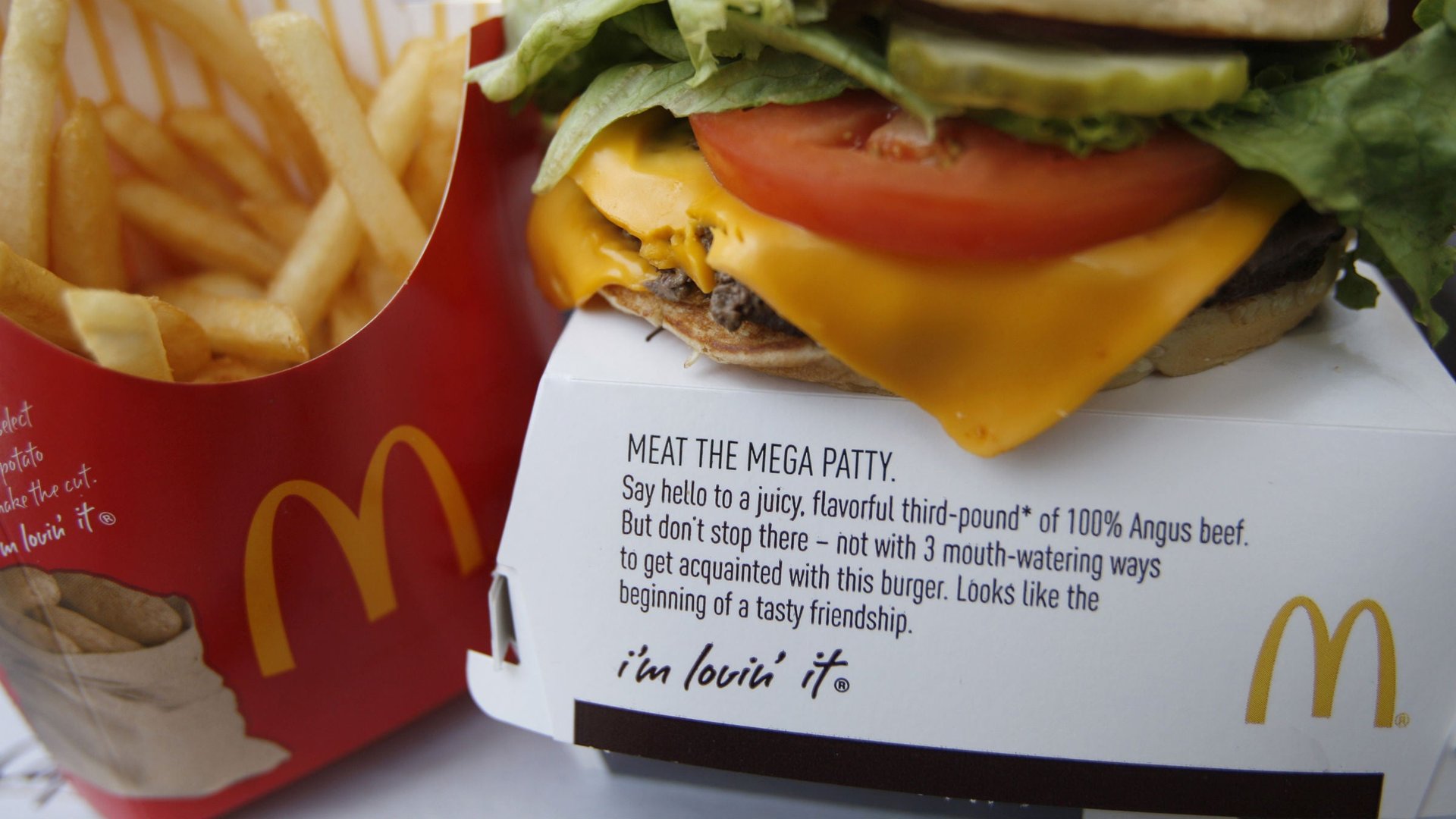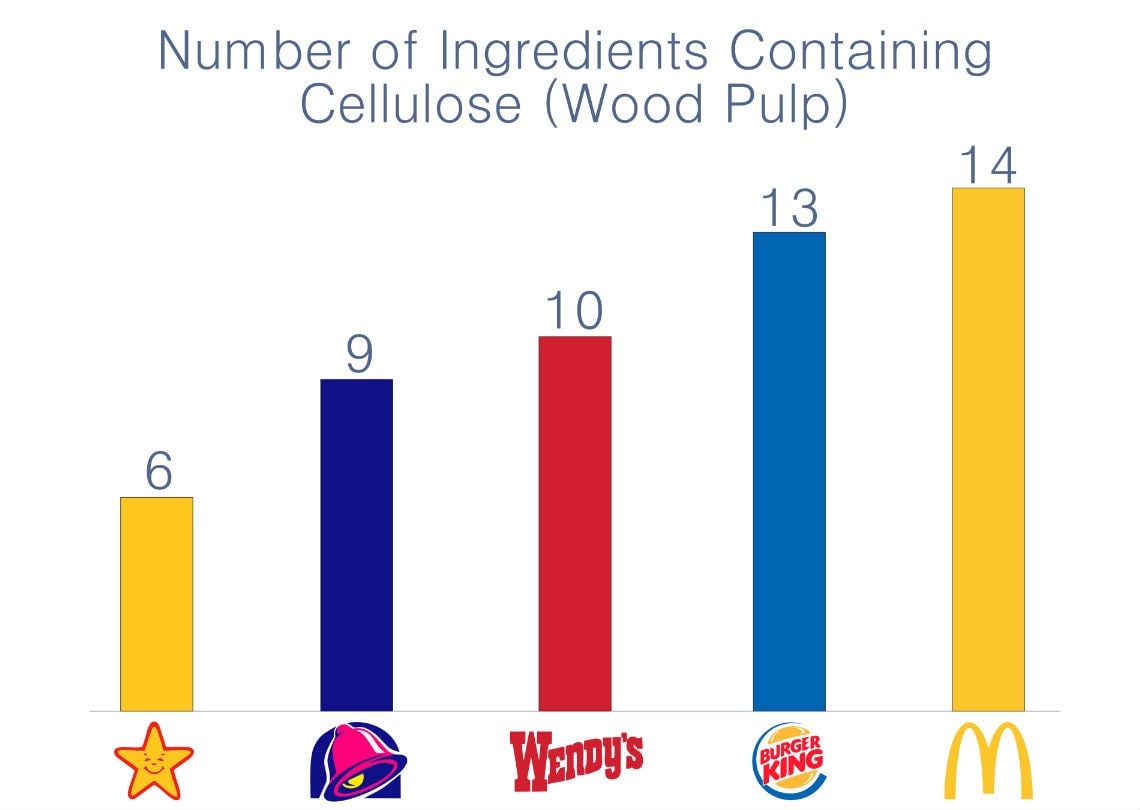There is a secret ingredient in your burgers: wood pulp
There may be more fiber in your food than you realized. Burger King, McDonald’s and other fast food companies list in the ingredients of several of their foods, microcrystalline cellulose (MCC) or “powdered cellulose” as components of their menu items. Or, in plain English, wood pulp.


There may be more fiber in your food than you realized. Burger King, McDonald’s and other fast food companies list in the ingredients of several of their foods, microcrystalline cellulose (MCC) or “powdered cellulose” as components of their menu items. Or, in plain English, wood pulp.
The emulsion-stabilizing, cling-improving, anti-caking substance operates under multiple aliases, ranging from powdered cellulose to cellulose powder to methylcellulose to cellulose gum. The entrance of this non-absorbable fiber into fast food ingredients has been stealthy, yet widespread: The compound can now be found in buns, cheeses, sauces, cakes, shakes, rolls, fries, onion rings, smoothies, meats—basically everything.
The cost effectiveness of this filler has pushed many chains to use progressively less chicken in their “chicken” and cream in their “ice cream.” McDonald’s ranks highest on the list with cellulose integrated into 14 of their menu items including their renowned fish fillets, chicken strips and biscuits, with Burger King ranking second on the list with 13 menu items containing cellulose. Moreover, many cellulose-laden ingredients (such as honey mustard, bbq sauce, and cheese blends) can be found in multiple items throughout the menu making the filler difficult to avoid.

All of these cellulose-based ingredients are non-digestible wood pulp possessing no nutritional value. Though some studies suggest that microcrystalline cellulose may have adverse effects on cholesterol, the FDA has approved powdered cellulose for human consumption in moderate doses.
Studies on the effects of microcrystalline cellulose are continuing, but meanwhile, so is the adoption of wood pulp-based fillers.
Follow Devin on Twitter @devvtones. We welcome your comments at ideas@qz.com.